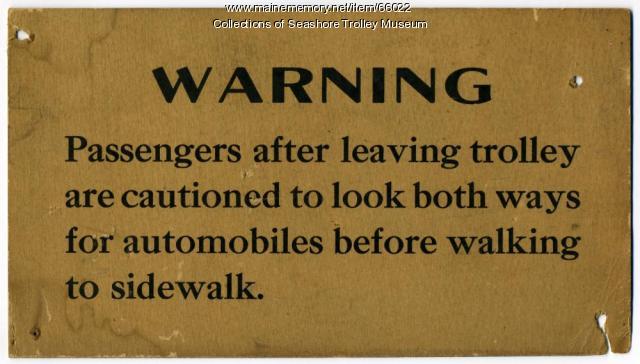Keywords: electric lights
Item 74517
Westinghouse Round-type electric meter, 1904
Contributed by: Maine Historical Society Date: circa 1904 Media: Metal, glass
Item 31362
The Second Blue Point School, Scarborough, ca. 1926
Contributed by: Bruce Thurlow through Scarborough Historical Society & Museum Date: circa 1926 Location: Scarborough Media: Slide, transparency
Item 78307
29-33 Union Street, Portland, 1924
Owner in 1924: Cumberland County Power & Light Company Use: Electric Building
Item 50768
29-33 Exchange Street, Portland, 1924
Owner in 1924: Wm W. Thomas Jr. Trustee Use: Store & Office
Item 150662
Plan of Dynamos and Shafting for Electric Light Station, Lewiston, 1895
Contributed by: Maine Historical Society Date: 1895 Location: Lewiston Client: Lewiston Water Works Architect: George M. Coombs
Item 150667
Lewiston Water Works Electric Light Station and Gate, Lewiston, 1878-1907
Contributed by: Maine Historical Society Date: 1878–1907 Location: Lewiston Client: Lewiston Water Works Architect: George M. Coombs; Stevens and Coombs Architects
Exhibit
Wired! How Electricity Came to Maine
As early as 1633, entrepreneurs along the Piscataqua River in southern Maine utilized the force of the river to power a sawmill, recognizing the potential of the area's natural power sources, but it was not until the 1890s that technology made widespread electricity a reality -- and even then, consumers had to be urged to use it.
Exhibit
Many different types of trolley cars -- for different weather, different uses, and different locations -- were in use in Maine between 1895-1940. The "field guide" explains what each type looked like and how it was used.
Site Page
View collections, facts, and contact information for this Contributing Partner.
Site Page
Lubec, Maine - The Lighthouse at West Quoddy Head
"Eventually the modern electrically-powered foghorn became standard equipment at lighthouses. Living at the Lighthouse Not an easy life those early…"
Story
making light
by David Johansen
My relationship with Maine and how and why I make neon lights here.
Story
Monument Square 1967
by C. Michael Lewis
The background story and research behind a commissioned painting of Monument Square.

















